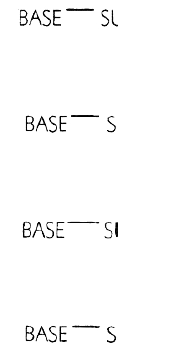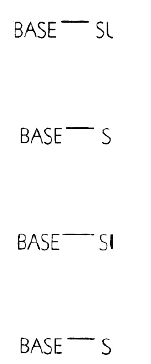Consider the following facts about the salient features of structure of DNA.
(a.Backbone constituted by sugar-phosphate,
b.Anti-parallel polarity,
c.chains coiled in right-handed fashion,
d.Pitch of helix is 34 nm,
e.Distance between a base pair in helix is 0.34 nm) Which of the above statements are correct?
a,b,c,e
a,b,d,e
a,b,d
b,c,d
To determine which statements about the structure of DNA are correct, let's analyze each statement one by one.
1. Statement (a): Backbone constituted by sugar-phosphate.
- The backbone of DNA is indeed made up of alternating sugar (deoxyribose) and phosphate groups. This statement is correct.
2. Statement (b): Anti-parallel polarity.
- DNA strands run in opposite directions, meaning one strand runs 5' to 3' while the other runs 3' to 5'. This characteristic is known as anti-parallel polarity. This statement is correct.
3. Statement (c): Chains coiled in right-handed fashion.
- The structure of DNA is a right-handed double helix. This means that as you move along the helix, it twists in a right-handed direction. This statement is correct.
4. Statement (d): Pitch of helix is 34 nm.
- The pitch of the DNA helix refers to the distance it takes for one complete turn of the helix. The correct pitch of the DNA helix is approximately 3.4 nm, not 34 nm. Therefore, this statement is incorrect.
5. Statement (e): Distance between a base pair in helix is 0.34 nm.
- The distance between adjacent base pairs in the DNA helix is indeed about 0.34 nm. This statement is correct.
Summary of Correct Statements:
- Correct statements: (a), (b), (c), (e)
- Incorrect statement: (d)
Final Answer:
The correct statements about the structure of DNA are (a), (b), (c), and (e).
---
- The backbone of DNA is indeed made up of alternating sugar (deoxyribose) and phosphate groups. This statement is correct.
- DNA strands run in opposite directions, meaning one strand runs 5' to 3' while the other runs 3' to 5'. This characteristic is known as anti-parallel polarity. This statement is correct.
- The structure of DNA is a right-handed double helix. This means that as you move along the helix, it twists in a right-handed direction. This statement is correct.
- The pitch of the DNA helix refers to the distance it takes for one complete turn of the helix. The correct pitch of the DNA helix is approximately 3.4 nm, not 34 nm. Therefore, this statement is incorrect.
- The distance between adjacent base pairs in the DNA helix is indeed about 0.34 nm. This statement is correct.
- Correct statements: (a), (b), (c), (e)
- Incorrect statement: (d)
The correct statements about the structure of DNA are (a), (b), (c), and (e).
Topper's Solved these Questions
Similar Questions
Consider the following six statements (a-e) about causes of biodiversity losses.
a. Tropical rain forests once covering more than 14% of the earth's land surface, these forests now cover no more than 0.6%.
b. Biological system should not be exploited beyond the degree of their renewability.
c. Nile perch, a large predator fish was introduced into Lake Victoria of East Australia.
d. Lantana is an indigenous plant of our country.
e. Recent illegal introduction of the American catfish for aquaculture purpose is posing a threat to the indigenous catfishes in our rivers.
Which of the above statement(s) is/are correct?
View SolutionRead the passage given below and answer the question:
EVIDENCE FOR THE FIBROUS NATURE OF DNA
The basic chemical formula of DNA is now well established. As shown in Figure 1 it consists of a very long chain, the backbone of which is made up of alternate sugar and phosphate groups, joined together in regular 3' 5' phosphate di-ester linkages. To each sugar is attached a nitrogenous base, only four different kinds of which are commonly found in DNA. Two of these---adenine and guanine--- are purines, and the other two thymine and cytosine-are pyrimidines. A fifth base, 5-methyl cytosine, occurs in smaller amounts in certain organisms, and a sixth, 5-hydroxy-methyl-cytosine, is found instead of cytosine in the T even phages. It should be noted that the chain is unbranched, a consequence of the regular internucleotide linkage. On the other hand the sequence of the different nucleotides is, as far as can be ascertained, completely irregular. Thus, DNA has some features which are regular, and some which are irregular. A similar conception of the DNA molecule as a long thin fiber is obtained from physicochemical analysis involving sedimentation, diffusion, light scattering, and viscosity measurements. These techniques indicate that DNA is a very asymmetrical structure approximately 20 A wide and many thousands of angstroms long. Estimates of its molecular weight currently center between 5×106 and 107 (approximately 3×104 nucleotides). Surprisingly each of these measurements tend to suggest that the DNA is relatively rigid, a puzzling finding in view of the large number of single bonds (5 per nucleotide) in the phosphate-sugar back bone. Recently these indirect inferences have been confirmed by electron microscopy.

(source: Watson, J. D., & Crick, F.H. (1953, January). The structure of DNA. In Cold Spring Harbor symposia on quantitative biology (Vol. 18, pp. 123-131). Cold Spring Harbor Laboratory Press.)
DNA has a _______ backbone
View Solution
Knowledge Check
The salient feature of DNA are -
(i) It is made of two polynucleotide chain
(ii) Back bone is constituted by sugar and nitrogen base
(iii) Two chain hacve parallel polarity
(iv) Bases in two strands are paired through H-bonds
(v) The two chain are coiled in a left handed fashionAi, iv and vBi and ivCi, ii and vDAll of theseThe salient feature of DNA are -
(i) It is made of two polynucleotide chain
(ii) Back bone is constituted by sugar and nitrogen base
(iii) Two chain hacve parallel polarity
(iv) Bases in two strands are paired through H-bonds
(v) The two chain are coiled in a left handed fashionAI, iv, vBI, ivCI, ii, vDI, ii, iii, iv, vWhich of the following statements are related to the structure of double helical DNA ?
I.The helix makes one complete spiral turn every 34 A.
II. The diameter of the helix is 20 A
III.The distance between adjacent nucleotide is 3.4 A.
IV. Each strand of helix has a backbone made up of alternating ricbose sugar and phosphate .
V. The two adjacent sugar molecules joined with phosphate by phosphodiester bond.AI and IIBI,II,III and VCII and IVDIII, IV and V
Read the passage given below and answer the question:
EVIDENCE FOR THE FIBROUS NATURE OF DNA
The basic chemical formula of DNA is now well established. As shown in Figure 1 it consists of a very long chain, the backbone of which is made up of alternate sugar and phosphate groups, joined together in regular 3' 5' phosphate di-ester linkages. To each sugar is attached a nitrogenous base, only four different kinds of which are commonly found in DNA. Two of these---adenine and guanine--- are purines, and the other two thymine and cytosine-are pyrimidines. A fifth base, 5-methyl cytosine, occurs in smaller amounts in certain organisms, and a sixth, 5-hydroxy-methyl-cytosine, is found instead of cytosine in the T even phages. It should be noted that the chain is unbranched, a consequence of the regular internucleotide linkage. On the other hand the sequence of the different nucleotides is, as far as can be ascertained, completely irregular. Thus, DNA has some features which are regular, and some which are irregular. A similar conception of the DNA molecule as a long thin fiber is obtained from physicochemical analysis involving sedimentation, diffusion, light scattering, and viscosity measurements. These techniques indicate that DNA is a very asymmetrical structure approximately 20 A wide and many thousands of angstroms long. Estimates of its molecular weight currently center between 5×106 and 107 (approximately 3×104 nucleotides). Surprisingly each of these measurements tend to suggest that the DNA is relatively rigid, a puzzling finding in view of the large number of single bonds (5 per nucleotide) in the phosphate-sugar back bone. Recently these indirect inferences have been confirmed by electron microscopy.

(source: Watson, J. D., & Crick, F.H. (1953, January). The structure of DNA. In Cold Spring Harbor symposia on quantitative biology (Vol. 18, pp. 123-131). Cold Spring Harbor Laboratory Press.)
Out of the four different kinds of nitrogenous bases which are commonly found in DNA, _______ has been replaced in some organisms.
View SolutionX' is physiologically and biologically active from of DNA . The pitch of its helix is 34Å with a distance between two adjacent base pair of about 3.4Å It shows right-handed coiling. Identify 'X'
View SolutionGiven below are statements on the structure of the DNA double helix.
1: The helix generally is wound clockwise.
2: Purines and pyrimidines are paired by different number of hydrogen bonds.
3: The two strands run in parallel polarity.
4: The sugar in DNA backbone is a pentose sugar.
Which of the above statement/s is/are NOT TRUE?
View SolutionWhich statement/s is/are incorrect regarding DNA ?
I. DNA has a double helix structure.
II. DNA can be double-stranded or single-stranded in animals
III. The two chains have parallel polarity.
IV. The pitch of the helix is 3.4 nm.
View SolutionRead the following five statements (A to E) about nucleic acids and select the option with all correct statements:
(A) DNA is a long polymer of deoxyribonucleotides.
(B) The two chains of DNA have anti-parallel polarity.
(C) The backbone in a polynucleotide chain is formed due to nitrogenous bases and phosphates.
(D) DNA acts as the genetic material in most of the organisms.
(E) Uracil is present in RNA at the place of cytosine.
View Solution
